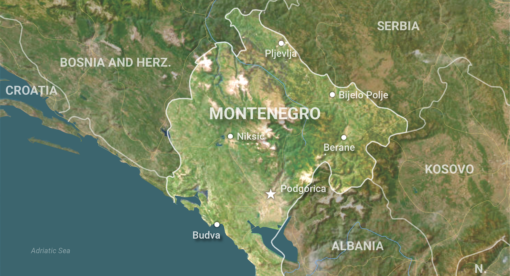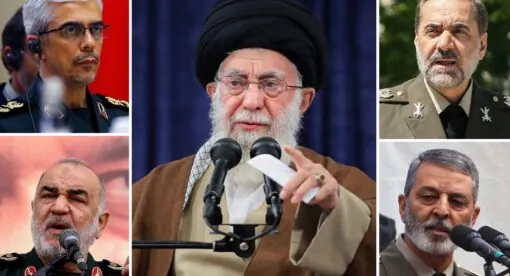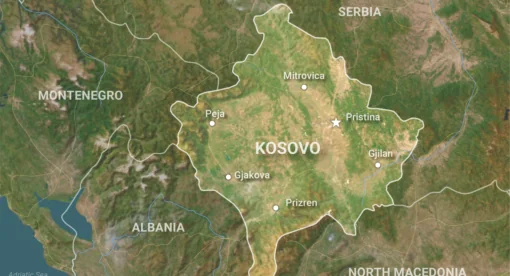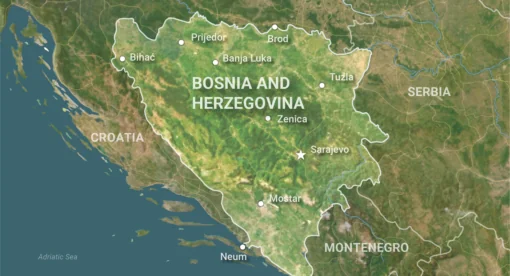Nine years into the Syrian civil war, the conflict has entered a phase of critical geopolitical importance. For the bulk of its timeline, it was essentially a proxy conflict between regional and global powers interfused with the struggle against dangerous non-state actors like the Islamic State.

The Islamic State, however, is now a shadow of its former self, and a litany of national forces and their associated militias are embedded in practically all Syrian territory. The underlying drivers behind these respective military forces – particularly those of Turkey, Russia, and Iran, who through their local allies dominate the battlespace – are still very divergent.

Therefore, as these three powers continue to pursue their interests in Syria, they more readily clash directly with each other on the battlefield, increasing the risk of a transition from proxy conflict to direct state-on-state conflict. As the risk increases, however, an opportunity is also emerging for the United States to repair its strategic relationship with Turkey as the latter increasingly clashes with the other powers.
Russia
The key strategic goals behind Russia’s intervention in Syria include stabilizing an allied government, ensuring its military presence in the country, bolstering its regional and global influence in relation to its geopolitical competitors, and denying a space where anti-Russian militants could build up their capabilities.
A crucial element of Russia’s military strategy in pursuit of these objectives in Syria is the attempt to commit the minimum amount of forces but to maximum effect. Russia maintains a relatively small but highly influential armed presence in Syria, rarely exceeding 5,000 uniformed personnel supplemented by a few thousand private military contractors. Instead, Moscow has chosen to pursue its goals in the country by building up three core strengths in Syria that are tailored toward significantly augmenting rather than duplicating the fighting capabilities of its allied factions already involved in the conflict.
Strengths
The first and most visible of these is the firepower element. This is principally in the form of the air component that Russia has deployed to Syria, largely based out of Khmeimim airbase in the northwestern province of Latakia. Occasionally reinforced by Russian tube and rocket artillery batteries as well as helicopter gunships for major operations, squadrons of Russian Su-24, Su-25, Su-34, and Su-35 combat aircraft staging out of Khmeimim have spearheaded almost all the successful loyalist offensive operations in the country since 2015. The more modern Russian combat aircraft, the precision guided munitions available to the force, as well as the superior training of the Russian pilots are factors that are simply beyond the much more limited capabilities of the Syrian Arab Air Force, making the Russian firepower element a pillar of strength of the loyalist camp.
The second advantage that Russia brings to the Syrian conflict is its sustainment capabilities. Russia’s economic and political circumstances are such that Moscow is very unwilling to financially invest in the much-needed recapitalization of its Syrian ally’s military forces after almost a decade of heavy fighting. However, Moscow benefits from the immense stockpile of military equipment left over from the Cold War currently sitting in storage facilities across Russia. While Russia has sent the occasional shipment of modern equipment, such as some T-90 tanks, to the Syrians, it continues to send large numbers of aging but still useful equipment to the Syrians that has proven critical in keeping the Syrian army in the fight.
The third Russian strength in Syria is the special operations capabilities it has built up there. Russian special operations forces have shown their worth as force multipliers when embedded with Syrian troops and their allied militias, and conduct the occasional independent direct action of their own on the battlefield. These forces are augmented by the significant number of Russian private military contractors deployed in the country from the likes of Wagner, Shield, Patriot, and Vega groups, who are often used to train Syrian military personnel, guard sensitive sites and Syrian leaders, and serve as less politically sensitive personnel in high-casualty operations.
Weaknesses
Russia’s significant military advantages in Syria have enshrined Moscow’s status as a dominant actor in the country, but they have not been enough to achieve all of Russia’s strategic objectives. Russia has stabilized the rule of the pro-Russia government in Damascus, secured a sizable strategic foothold in the strategically important western half of the country, and bolstered Moscow’s regional influence. However, Russia has thus far failed to terminate or at least freeze the conflict and is increasingly compelled to send additional manpower and resources to the battlefield when its objective is to reduce its overall commitments.
Russia’s failure to achieve all its goals is linked to continued gaps in its force posture in the country as well as a lack of suitable alternatives. Sizable ground forces are indispensable in a conflict like the Syrian Civil War – in order to seize and hold captured terrain and wage a counterinsurgency strategy in already recaptured areas. Since the start of its campaign, however, Russia has elected to not take the politically and economically costly option of deploying a sizable ground contingent in Syria, preferring instead to bolster Syrian government forces and to rely on Iranian-mobilized militias. However, these forces have struggled to adequately fulfill this role. Russia’s strategy of getting the Europeans and potentially even the Americans to invest in reconstruction efforts in Syria has also been completely unsuccessful. A struggling Syrian economy has made it even more difficult for Russia to push for a strong central state that can terminate the conflict.
For all its success, Russia now faces some considerable risks to its gains in the country. Moscow has had to send back additional combat units to participate in escalating operations in Idlib, deploy ever more military policing formations to monitor various cease-fires and political agreements, and continue expansive efforts to equip its allied formations. Notably, significant regional powers such as Turkey and Israel have only continued to increase their operations against Damascus, raising the possibility that Russia would find itself drawn into a wider conflict.

Turkey
As a neighboring country with sizable associated security concerns in Syria, Turkey has played a dominant role in the Syrian conflict from the very beginning. The intricacies of Turkey’s geopolitical interests and objectives in Syria are too complicated to adequately cover here, but its overall strategy began as an attempt to install a friendly regime in Damascus. Once it became clear that regime-change was no longer a realistic strategy, Ankara set the goal of ensuring a viable buffer space along its border against the Syrian Democratic Forces dominated by the Kurdish People’s Protection Units (also known as YPG).
Strengths
Turkey possesses one of the most powerful armed forces in the region, allowing Ankara the option to carry out operations in Syria with significant military strength.
A large number of relatively well-trained personnel backed up by considerable artillery and mechanized assets are rounded out by some elite mountain and commando units that have already seen significant action in Syria. Turkey can also leverage its ties to a large number of opposition factions in the civil war to lessen the burden on its own forces. Turkey’s influence over some of these factions in many cases is even quite extensive, as can be seen from its ability to draw them out of their own conflict in Syria and deploy them to other theaters such as Libya.
Turkey’s geographic proximity to the conflict, while increasing the overall threat of spillover from the Syrian civil war, also serves as an advantage in shortening the logistics lines for operations and allowing for the quick deployment of large numbers of forces. Turkey’s reputable defense industry has also emerged as a key factor in the conflict. As can be seen in the latest operations in Idlib, Turkish-built Anka-I and Bayraktar TB-2 unmanned aerial vehicles, especially in conjunction with Turkish-made Koral electronic warfare systems and T-155 Firtina howitzers, have proven to be a deadly combination.
Weaknesses
Despite all its major nominal strengths, Ankara’s freedom of action in Syria remains considerably hampered by the Russian involvement in the conflict. While theoretically, Turkey could overwhelm the limited Russian contingent in the country with relative ease, Ankara of course strives to avoid escalating the conflict with a major power like Russia and is cautious to prevent direct clashes with Russian forces during its operations. This puts serious limits on Turkish action; Russia has not hesitated to use small detachments of its troops to block Turkish operations or to even at times leverage this advantage into denying Turkish aircraft the use of airspace.
Turkey also suffers from some notable critical gaps in its military capabilities, the most prominent of which is underdeveloped air defense capabilities. Turkey would likely be significantly bolder in challenging Russia if it had confidence in its ability to defeat the threat of Russian air and missile strikes. But with Russia able to strike as far as Istanbul and Ankara with its Kalibr cruise missiles, a system Moscow is fond of occasionally highlighting during its operations in the Mediterranean and Syria, Turkey is understandably even more wary about the potential ramifications of a conflict with Russia. Ironically, the first major systems that Turkey is set to bring in to address this capability gap are the Russian S-400s – which Turkey would not use to deter Russia, since Ankara needs the support of Russian contractors.
Finally, the advantages gleaned from Turkey’s extensive ties with opposition forces in the Syrian civil war often underwhelm. The rebel landscape in Syria is extremely diverse, in terms of both the disparate factions’ military capabilities and their ideology and reliability. A few of these factions have proven both ideologically suitable and militarily capable for Turkey’s purposes, but more often the factions are either too weak militarily or ideologically problematic, as is most notably the case with the powerful Hayat Tahrir al-Shaam and the Turkistan Islamic Party.
Iran
Locked in a geopolitical struggle with other regional powers in the Middle East and at serious odds with the United States, Tehran is determined to keep one of its few allies, the Syrian government, in power. Iran also understands the benefits of a foothold in Syria both as a means of building up its retaliatory military capabilities there and as a logistical lifeline toward Hezbollah in Lebanon.
Strengths
Iran has provided two key military benefits to the loyalist camp during the Syrian civil war. The first is by supplementing the Syrian government’s ground forces with a number of Islamic Revolutionary Guard Corps-directed militias from across the region, ranging from elite formations such as the Lebanese Hezbollah to less capable outfits such as the Iraqi al-Abbas, Afghan Fatemiyoun, and Pakistani Zainebiyoun militia brigades. The second is in the flood of Iranian military advisers who have been crucial in the recruitment and training of Syrian military personnel, particularly following the mass desertion of these troops in the early stages of the civil war. Iran, for instance, was instrumental in the creation of the National Defense Forces as an auxiliary force to the main military in late 2012. To a lesser extent, given its own limitations, Tehran has also done what it can to bolster the Syrian government’s economy through investments and financial credit lines, particularly toward the purchase of bulk products and oil.
Weaknesses
While Iran has been critical to the survival of the Assad regime in Syria, several weaknesses have led to its gradual displacement by Russia as the most influential backer of the Syrian government in the latter stages of the conflict. For instance, Russia took the lead in the recruitment and equipping of Syrian military and auxiliary formations, and Tehran had no firepower to offer Damascus that could match that of the Russian air force in particular. Russia also carries significantly more diplomatic weight than Iran, and its presence in Syria continues to do far more to prevent military escalation by other anti-Assad nation states than Iran’s capabilities have. Given that Russia does not necessarily see eye to eye with Iran in all aspects of the conflict, Tehran has had to adapt to a less dominating role in the strategic direction of the conflict, as it recognizes the key benefits that Moscow brings to the loyalist camp.
At a more tactical level, Iran’s lack of air defense capabilities also continues hampering its ability to respond to pervasive Israeli air and missile strikes on its assets in Syria. These strikes have not been enough to significantly dent Iran’s ongoing efforts to bolster its presence and equipment in the country and to transfer more weapons to Lebanon, but they do impose an enduring cost on Iran’s activities, with the constant possibility of a much more significant Israeli escalation on the horizon.
Forecast
Given the respective strengths and weaknesses of the three main non-Syrian national actors in the country, how will the Syrian battlefield evolve over the next year?

Absent a wider Iranian-Israeli war that could ignite the Golan Heights area, the main theater of operations and the most dangerous for escalation will remain in northern and northeastern Syria where Turkey remains as the last major bulwark against the loyalist camp. Turkey will strive to tighten the reins on the remaining rebel forces, particularly in Idlib, to better control events in the north. Ankara will leverage these groups’ growing dependence on Turkey’s support to its benefit in this endeavor, but will likely still face considerable resistance from extremist groups like Hayat Tahrir al-Shaam and Huras al-Din. In effect, this means that even without Turkey’s blessing, sub-national militant groups will continue to carry out operations against Syrian government forces and their Russian and Iranian allies from territory nominally in the Turkish zone of influence. Ankara will also remain fixated on territory still under the control of the Syrian Democratic Forces and, especially if there are further U.S. withdrawals from Syria, will seek to push into these areas.
The Syrian government remains unwavering in its desire to recapture territory, and both Russia and Iran will continue carefully backing this effort. Russia in particular is determined to fully secure its positions and forces, particularly its airbase in Latakia, from ongoing militant attacks, which necessitates further operations in Idlib. Iran, for its part, will strive to protect its critical Syrian ally from further encroachments by its geopolitical competitor Turkey.
With Turkey and the rebels still militarily active in the north and northeast, and with Russia and Iran willing to support further advances by Syrian government forces in the same areas, further significant clashes are almost certain despite the constant attempts at cease-fires. These clashes will raise the risk of an expansion of the conflict with wider geopolitical ramifications, even as a military victory by either side is unlikely, given the various weaknesses and constraints discussed above.
Turkey will likely avoid a complete breakdown in relations with both Russia and Iran over Syria, especially since the alternative would very likely be a full conflict. For instance, Turkey is still closely coordinating with Moscow on various cease-fire arrangements, including setting up joint patrols with Russia. However, the Syrian standoff with Moscow is likely to gradually propel Ankara toward further attempts at repairing the major fissures in its relationship with Washington that have emerged over the last few years.
An opportunity remains for Washington to capitalize on Turkey’s ongoing demand for air defense systems as Ankara becomes less willing to rely heavily on Russia for this security need. The United States could also attempt to move past the divergence with Turkey over its alignment with the Syrian Democratic Forces. The northern regions previously dominated by the Syrian Democratic Forces are increasingly under the sway of Russia and the Syrian government, potentially lessening the degree to which this issue remains a friction point between Washington and Ankara.
Ultimately, Turkey needs the United States as a balance against Russia, and the United States still benefits from a closer relationship with Turkey, which will remain a dominant player in the Middle East and a strategic player in southeastern Europe and the Black Sea. The United States is bound to have several opportunities to encourage this policy direction as alignments shift in Syria, even though a full normalization of the relationship is unlikely in the short term.
Omar Lamrani is a geopolitical analyst who specializes in conflict analysis and military dynamics. Lamrani is an expert on air, land, and naval strategy; military technology and logistics; the great power competition in space; and defense doctrine, including the Middle East, Europe, and Asia. He previously served as Senior Military Analyst at the geopolitical analysis firm Stratfor for eight years. Mr. Lamrani holds a master’s degree from the Diplomatic Academy of Vienna, where his thesis centered on Chinese military doctrine and the balance of power in the Western Pacific.
The views expressed in this article are those of the author and not an official policy or position of the New Lines Institute.







